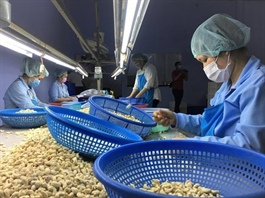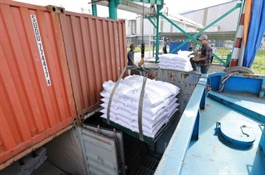Exporting pressures heaped onto steel enterprises
Exporting pressures heaped onto steel enterprises
When competing with China’s massive output, Vietnam’s exports of steel are being hampered.

Li Peng, a purchase director at Third Construction Co. Ltd., a subsidiary of state-owned China State Construction, stated in early July that the market for sheet and section steel products in Indonesia has been “quite favourable” for the past few months due to the construction of factories for projects funded by Chinese companies.
China’s exports of steel products rose by 41 per cent on-year during the first half of 2023, Peng cited. Local analysts predicted that in 2023, the country’s steel exports will reach a record 77 million tonnes, the highest level since 2016.
Strong demand from Southeast Asia, the Middle East, and Africa, combined with high energy costs in several nations, leaves “steel production less competitive” regarding Chinese prices, according to Hao Pei, a senior analyst based in Shanghai. The World Steel Association reported that steel production in Asia and Oceania decreased by 6 per cent in May.
“The most plain explanation is that a weakened renminbi is advantageous for exports,” Pei said. “Moreover, China’s export prices are attractive. Since the beginning of the year, the yuan has depreciated nearly 5 per cent against the USD.”
Previously, in May, steel prices hit their lowest level in three years as a result of the months-long downturn in China’s real estate market.
Nguyen Quoc Hiep, president of the Vietnam Association of Construction Contractors, told VIR that the health of Vietnam’s real estate market is deteriorating, resulting in a number of construction enterprises, including steel, struggling to survive.
“According to calculations by the Ministry of Construction, the construction industry’s development in the second quarter declined by 3 per cent year-over-year, but the actual figure is lower,” he said. “The second quarter is better than the first, when growth was only 8-9 per cent of the plan for 2023 with several public projects were implemented in Q2, most notably the North-South Expressway.”
However, this was insufficient to alter the enterprises’ dismal business situation. “We estimate that during the first six months of this year, the construction industry barely met 30 per cent of its goals,” Hiep said.
However, unlike China, Vietnam’s exports of steel remain minimal. According to the General Statistics Office, exports of steel dipped by 17.2 per cent in the first six months, reaching $4.13 billion.
Duong Duc Quang, deputy director of the Mercantile Exchange of Vietnam, told VIR that China accounts for about 70 per cent of the world’s iron ore imports and generates more than half of the world’s steel, which explains why Vietnam’s steel export volume is still limited despite the sudden increase in the Chinese market. “This contributes to the industry consumption issue.”
However, according to Quang, Vietnam’s steel exports will have advantages in the future. In particular, on June 26, the EU revised its regulations on the application of safeguard measures to certain imported steel products, with the new rules taking effect on July 1.
“According to the new regulations, Vietnam is exempt from applying if its exports to the EU remain below 3 per cent of total EU imports for each product type,” Quang said.
In addition, the EU’s Carbon Border Adjustment Mechanism will prioritise commodity groupings with the highest risk of carbon leakage, such as steel. The mechanism applies a fee on goods imported from countries with fewer rigorous emission reduction regulations, enhancing obstacles for steel exports to the EU after it goes into effect on October 1.
According to the European Steel Association, the demand for steel in the EU is expected to decrease by 1 per cent in 2023 before rebounding by 5.4 per cent in 2024.
This concerns steel exporters, since Vietnam’s steel industry has a billion-dollar export market in the EU. In the prime year of 2021, steel exports to the EU reached $1.8 billion for the first time.
In addition to the EU, India will be a potential customer for Vietnamese steel exports due to the recovery of the construction industry and the policy to promote public expenditure to support steel consumption demand. According to information from the Indian Steel Joint Plant Committee, Vietnam was the fifth-largest supplier of steel to the Indian market between April 2021 and March 2023.
























